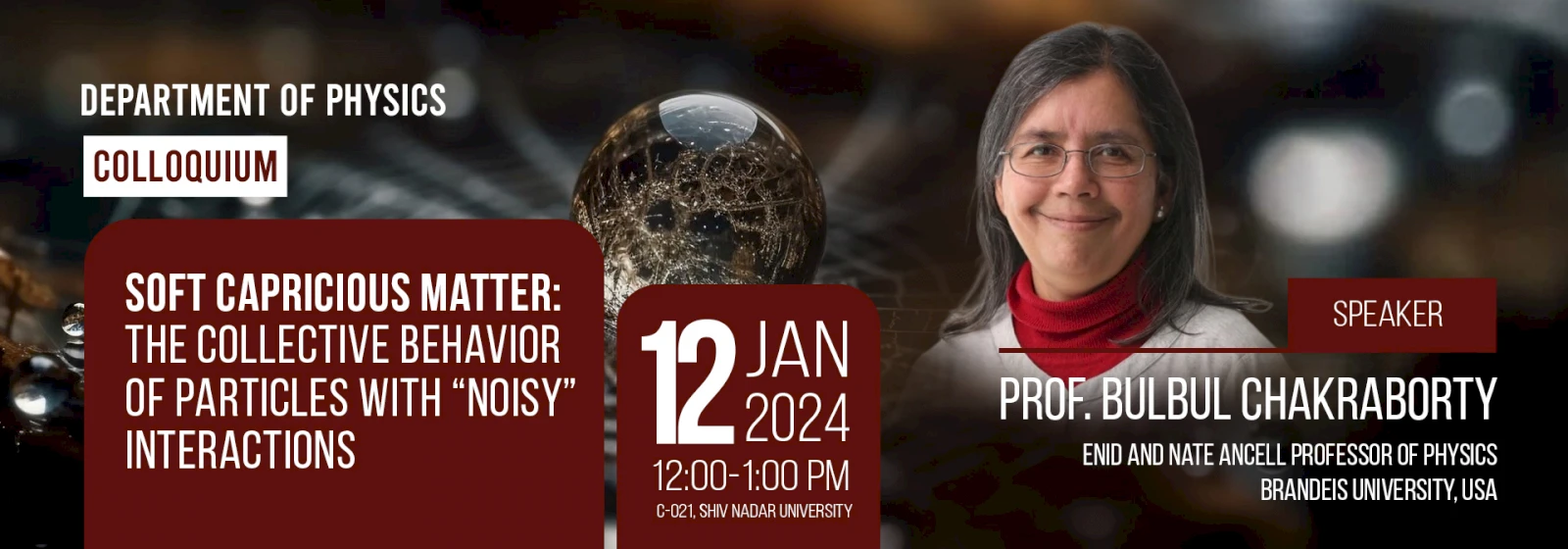Soft Capricious Matter: The collective behavior of particles with “noisy” interactions
Diversity in the natural world emerges from the collective behavior of large numbers of interacting objects. Statistical physics provides the framework relating microscopic to macroscopic properties. A fundamental assumption underlying this approach is that we have complete knowledge of the interactions between the microscopic entities. But what if that, even though possible in principle, becomes impossible in practice? Can we still construct a framework for describing their collective behavior? Dense suspensions and granular materials are two often quoted examples where we face this challenge. These are systems where because of the complicated surface properties of particles there is extreme sensitivity of the interactions to particle positions. In this talk, I will present a perspective based on notions of constraint satisfaction that provides a way forward. I will focus on our recent work on the emergence of elasticity in the absence of any broken symmetry, and sketch out other problems that can be addressed using this perspective.
About the speaker:
Bulbul Chakraborty is the Enid and Nate Ancell Professor of Physics and currently heads the Division of Science at Brandeis University. She completed her B.Sc. in Physics from the Indian Institute of Technology, Kharagpur and her Ph.D. from Stony Brook University. After a postdoc at Argonne National Laboratory, she briefly returned to India but moved back to the U.S. an joined the Brandeis faculty in 1989, where she was the first woman physicist to be tenured there. She is an elected fellow of the American Physical Society and the American Association of the Advancement of Science. She is the recipient of a Simons Fellowship in Theoretical Physics and a Distinguished Alumnus of IIT Kharagpur. Her current research centers on developing theories that describe the emergent properties of strongly interacting systems that are non-thermal. Examples include suspensions such as corn-starch, inks used in 3D printing, sand flowing in an hourglass and even sand dunes, where the common shared feature is their complex rheology: how they flow and jam in response to external driving. The challenge for a rigorous theoretical framework for these systems is the lack of conservation laws such as energy. Prof. Chakraborty has identified emergent conservation principles to construct field theories that describe the flow and rigidity of these unusual materials. A hallmark of her research is creating minimal theoretical models that focus on the underlying physics of messy, complex phenomena, identifying universal features.

Share this: